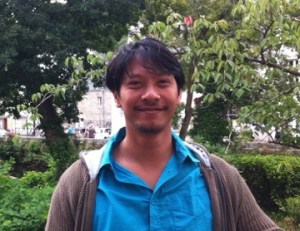
Etera Livine is a CNRS researcher and focuses especially on mathematical aspects of loop quantum gravity and spinfoam path integral models. Etera and Christoph both work on quantum gravity at the Laboratoire de Physique de l’Ecole Normale Supérieure de Lyon (LPENSL) in France.
Among the various approaches to the quantum gravity challenge, loop quantum gravity proposes a framework for a canonical quantization of general relativity, describing how the 3d geometry evolves in time. It does not require a priori extra dimensions or supersymmetry. It defines spin network states for the quantum geometry directly at the Planck scale, with a discrete spectra of areas and volumes, and computes their transition amplitudes by path integrals inspired from topological field theory, called spinfoam models. This framework is mathematically rigorous but Continue reading





You must be logged in to post a comment.